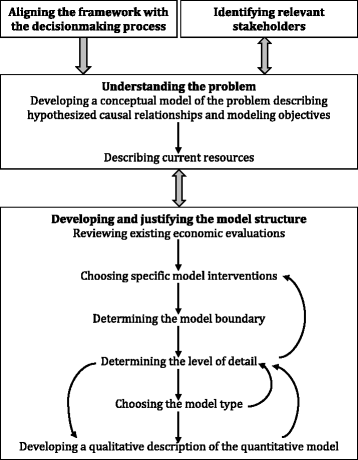Choosing an epidemiological model structure for the economic evaluation of non-communicable disease public health interventions
- PMID: 27152092
- PMCID: PMC4857239
- DOI: 10.1186/s12963-016-0085-1
Choosing an epidemiological model structure for the economic evaluation of non-communicable disease public health interventions
Abstract
Non-communicable diseases are the leading global causes of mortality and morbidity. Growing pressures on health services and on social care have led to increasing calls for a greater emphasis to be placed on prevention. In order for decisionmakers to make informed judgements about how to best spend finite public health resources, they must be able to quantify the anticipated costs, benefits, and opportunity costs of each prevention option available. This review presents a taxonomy of epidemiological model structures and applies it to the economic evaluation of public health interventions for non-communicable diseases. Through a novel discussion of the pros and cons of model structures and examples of their application to public health interventions, it suggests that individual-level models may be better than population-level models for estimating the effects of population heterogeneity. Furthermore, model structures allowing for interactions between populations, their environment, and time are often better suited to complex multifaceted interventions. Other influences on the choice of model structure include time and available resources, and the availability and relevance of previously developed models. This review will help guide modelers in the emerging field of public health economic modeling of non-communicable diseases.
Keywords: Cost-effectiveness; Economics; Modeling; Non-communicable disease; Public health.
Figures

References
-
- GBD 2013 Mortality and Causes of Death Collaborators Global, regional, and national age–sex specific all-cause and cause-specific mortality for 240 causes of death, 1990–2013: a systematic analysis for the Global Burden of Disease Study 2013. Lancet. 2015;385:117–71. doi: 10.1016/S0140-6736(14)61682-2. - DOI - PMC - PubMed
-
- Lim SS, Vos T, Flaxman AD, et al. A comparative risk assessment of burden of disease and injury attributable to 67 risk factors and risk factor clusters in 21 regions, 1990–2010: a systematic analysis for the Global Burden of Disease Study 2010. Lancet. 2012;380:2224–60. doi: 10.1016/S0140-6736(12)61766-8. - DOI - PMC - PubMed
-
- National Health ServiceEngland . Five year forward view. London: National Health ServiceEngland; 2014.
-
- Kelly M, Morgan A, Ellis S, Younger T, Huntley J, Swann C. Evidence based public health: a review of the experience of the National Institute of Health and Clinical Excellence (NICE) of developing public health guidance in England. Soc Sci Med. 2010;71:1056–62. doi: 10.1016/j.socscimed.2010.06.032. - DOI - PubMed
Grants and funding
LinkOut - more resources
Full Text Sources
Other Literature Sources
Miscellaneous

